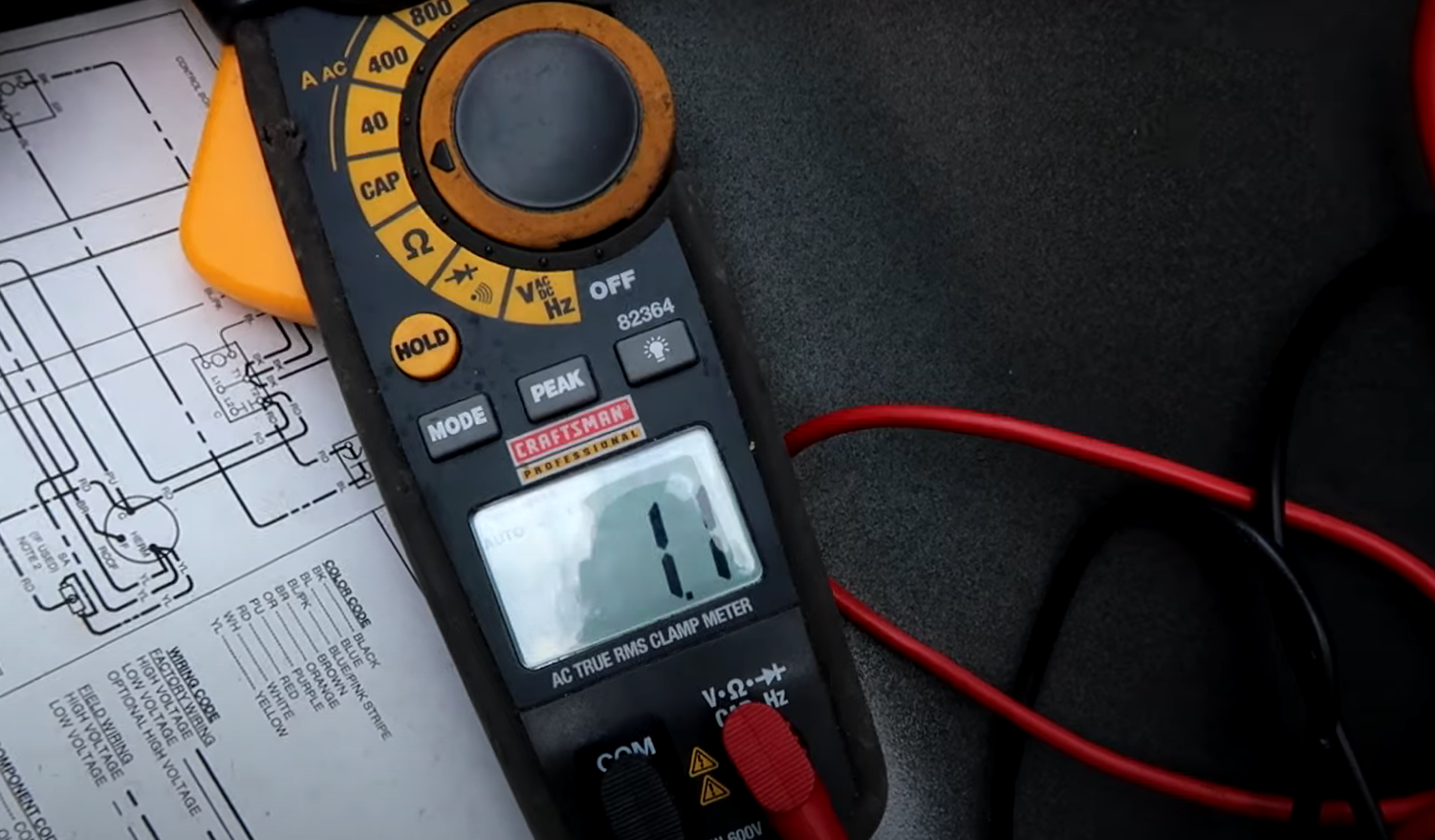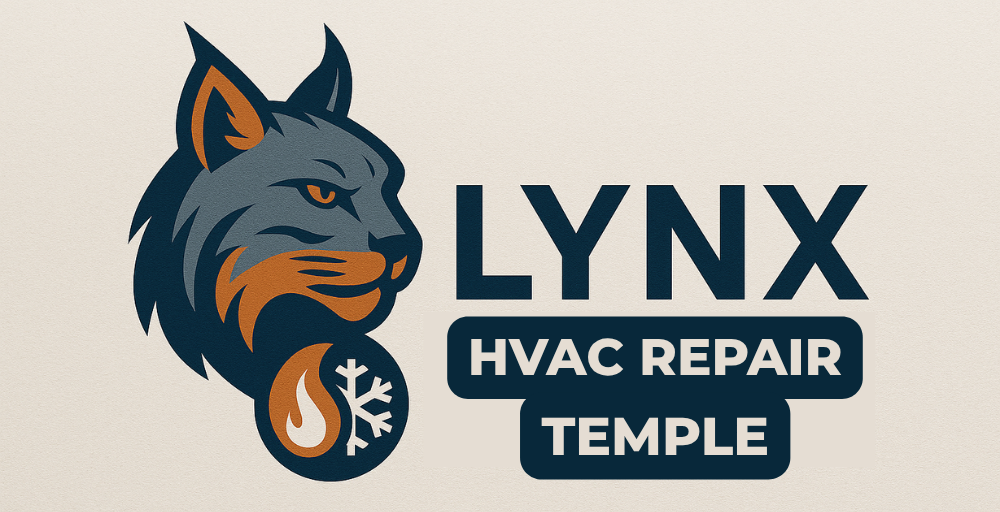Soundproof Air Vent Cover Installation Guide For Temple Homeowners
Noisy air vents can disrupt the peace and comfort of your Temple home, affecting sleep quality and daily activities. At Lynx HVAC Repair, your trusted Temple HVAC repair specialists, we understand the frustration of unwanted noise traveling through your ventilation system. Installing a soundproof air vent cover can reduce noise transmission by up to 70% while maintaining proper airflow throughout your home.
Professional soundproofing solutions for air vents combine specialized materials like acoustic foam and sound-dampening panels to create an effective barrier against noise. These covers work by absorbing and deflecting sound waves that typically travel through your HVAC system, offering a practical solution for Temple residents dealing with street noise, neighboring units, or mechanical system sounds.
Our local expertise in Temple's residential HVAC systems allows us to recommend and install soundproofing solutions tailored to your specific needs. We prioritize maintaining optimal airflow while maximizing noise reduction, ensuring your home stays comfortable and quiet year-round.
Key Takeaways
- Soundproof vent covers significantly reduce noise while preserving essential airflow
- Professional installation ensures optimal performance and system compatibility
- Custom solutions address specific noise issues common in Temple homes
Fundamentals of Soundproof Air Vent Covers
Air vent noise creates significant disruption in homes and offices, affecting comfort and productivity. Proper soundproofing requires understanding how noise travels through ventilation systems and implementing effective solutions while maintaining airflow.
How Air Vents Transmit Noise
Sound waves travel through air vents in two primary ways: through the metal ductwork and via the airflow itself. The hollow metal ducts act as natural sound conductors, carrying noise between rooms and floors.
Straight duct runs transmit more noise than those with bends or curves. Metal vent covers can also vibrate and create additional noise when air flows through them.
Sound reflects off the hard interior surfaces of ducts, allowing it to travel long distances with minimal reduction in volume. This is especially noticeable in rectangular ducts compared to round ones.
The Importance of Maintaining Ventilation
Effective soundproofing must balance noise reduction with proper airflow. Blocking vents completely can damage HVAC systems and create unsafe conditions.
Key Ventilation Requirements:
- Minimum 1 square inch of vent area per 2,000 BTU of HVAC capacity
- Return air paths must remain unobstructed
- Fresh air exchange rates based on room size and occupancy
Restricted airflow forces HVAC systems to work harder, increasing energy costs and reducing equipment lifespan. Proper ventilation also prevents moisture buildup and maintains indoor air quality.
Types of Air Vents in HVAC Systems
Supply vents deliver conditioned air to rooms through ceiling, wall, or floor registers. These typically have adjustable dampers to control airflow direction and volume.
Return vents draw air back to the HVAC unit for reconditioning. They're usually larger than supply vents and feature fixed grilles without dampers.
Common Vent Types:
- Floor registers
- Wall registers
- Ceiling diffusers
- Return grilles
- Transfer grilles
Each vent type requires different soundproofing approaches based on its location and function in the system. The size and style of vent covers also impact both noise transmission and airflow patterns.

Best Soundproofing Methods for Air Vent Covers
Effective air vent soundproofing requires a strategic combination of specialized materials and proven techniques. The right approach can reduce noise transmission by up to 70% while maintaining proper airflow through your HVAC system.
Using Acoustic Foam and Soundproofing Foam
Acoustic foam panels create a sound-absorbing barrier when properly installed around vent covers. Cut the foam to fit precisely around your vent opening, leaving enough space for adequate airflow.
Dense, open-cell foam with a Noise Reduction Coefficient (NRC) of 0.8 or higher provides optimal sound absorption. Professional-grade acoustic foam typically ranges from 1 to 2 inches thick.
Install the foam using adhesive spray designed for acoustic applications. Place strips of foam both inside the vent cover and along the surrounding wall area for maximum effectiveness.
Mass-Loaded Vinyl and Acoustic Caulk Applications
Mass-loaded vinyl (MLV) creates a heavy sound barrier that blocks airborne noise. Cut MLV sheets to match your vent dimensions, adding a 2-inch overlap on all sides.
Apply acoustic caulk around the vent frame before installing MLV. This creates an airtight seal that prevents sound leakage through gaps.
Recommended Installation Steps:
- Clean vent frame thoroughly
- Apply acoustic caulk in a continuous bead
- Press MLV firmly against the caulk
- Secure with mechanical fasteners
- Seal edges with additional caulk
Building a Sound Maze or Baffle
Sound mazes redirect noise waves through a series of obstacles, reducing sound transmission without blocking airflow.
Install sound-absorbing baffles in a zigzag pattern inside the duct. Space them 4-6 inches apart for optimal noise reduction while maintaining proper air movement.
Use professional-grade duct liners with a facing material rated for HVAC use. Secure baffles firmly to prevent vibration noise.
Vent Cover Materials for Noise Reduction
Metal vent covers with perforated holes offer better sound absorption than standard grilles. Look for covers with a minimum thickness of 1/16 inch.
Top Materials for Soundproof Vent Covers:
- Perforated aluminum with acoustic backing
- Heavy-gauge steel with rubber gaskets
- Composite materials with sound-dampening properties
Add rubber gaskets between the cover and mounting surface to eliminate vibration transfer and create a tighter seal.
Test different airflow settings after installation to ensure proper HVAC system operation.
Advanced Strategies and Professional Solutions
Professional soundproofing solutions combine specialized equipment with expert installation techniques to create truly quiet ventilation systems. These methods deliver superior noise reduction while maintaining proper airflow.
Duct Silencers and Inline Solutions
Duct silencers are engineered devices that fit directly into ventilation systems to absorb sound waves. These cylindrical units contain acoustic baffles and sound-absorbing materials specifically designed for HVAC applications.
The most effective duct silencers feature multiple chambers with precise spacing to target different sound frequencies. Installation points are critical - placing silencers near noise sources maximizes their effectiveness.
Modern silencer designs incorporate aerodynamic elements to minimize airflow resistance. This maintains system efficiency while reducing both mechanical noise and air turbulence.
Upgrading Ventilation with Flexible Ducts
Flexible ducts with internal sound-dampening liners significantly reduce noise transmission through HVAC systems. The spiral wire construction wrapped in insulation absorbs vibrations and disrupts sound waves.
High-quality flexible ducts feature multiple layers: an inner core for smooth airflow, sound-absorbing insulation, and a vapor barrier. This construction prevents both noise and thermal loss.
The natural curves of flexible ducts help break up sound waves. Strategic placement of gentle bends can reduce noise without restricting airflow.
When to Consult a Professional HVAC Technician
Contact a certified HVAC technician if your vent noise persists after basic soundproofing attempts. Professionals can identify complex issues like duct resonance or system imbalances that DIY solutions can't address.
A thorough inspection may reveal undersized ducts or improper transitions causing excessive air velocity. These issues require system modifications that only licensed technicians should perform.
Professional solutions might include rebalancing airflow, reinforcing duct connections, or installing commercial-grade sound attenuators. Expert installation ensures optimal performance and prevents potential damage to your HVAC system.
Supplementary Noise Reduction Tips for Temple, TX Homes
Effective noise reduction requires a multi-layered approach beyond basic vent modifications. The hot Texas climate makes strategic soundproofing essential while maintaining proper airflow and comfort.
Soundproof Curtains and Temporary Barriers
Soundproof curtains offer flexible noise control around air vents and windows. Look for curtains with multiple fabric layers and a minimum weight of 2 pounds per square yard for best results.
These specialized curtains can reduce noise by 7-12 decibels when properly installed with wraparound rods that minimize sound gaps at the edges.
For a temporary solution, magnetic vent covers provide quick noise reduction during peak traffic hours or stormy weather. Remove them during moderate weather to maintain optimal airflow.
Sealing Air Leaks for Added Quiet
Small gaps around vents significantly impact noise levels. Apply acoustic caulk to seal spaces between vent covers and walls.
Weather stripping around vent edges creates an additional sound barrier. Choose high-density foam tape rated for HVAC applications.
Inspect ductwork connections annually for separation that can create noise pathways. Proper sealing at joints reduces both noise transfer and energy loss.
How Lynx HVAC Repair Temple Can Help
Our certified technicians perform comprehensive vent noise assessments to identify specific sound sources in your system.
We install professional-grade sound dampening materials designed for Texas weather conditions. These include acoustic duct liners and vibration isolation mounts.
Our team can modify ductwork configuration to reduce air turbulence noise while maintaining proper system performance.
We provide custom solutions based on your home's layout and specific noise concerns. Regular maintenance prevents new noise issues from developing.
You might also like




